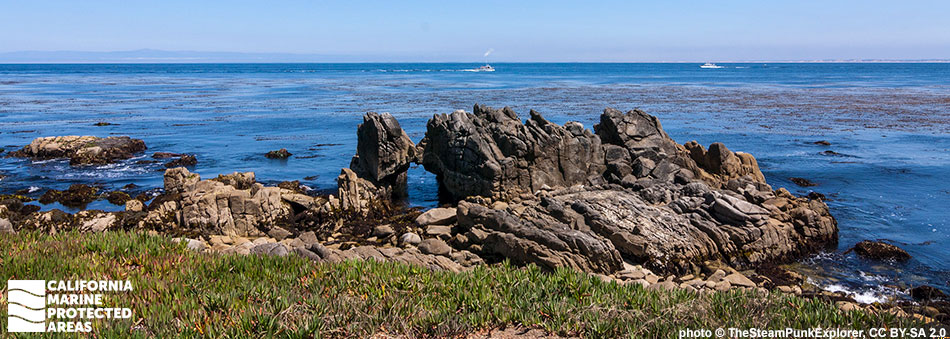
Overview
Pacific Grove Marine Gardens State Marine Conservation Area (SMCA) and Asilomar State Marine Reserve (SMR) are two of four marine protected areas (MPAs) located on the Monterey Peninsula. The SMCA spans almost 1½ miles of coastline between Lovers Point and Point Pinos, and reaches depths of around 150 feet. Although less than one square mile in total area, this MPA is popular for its rocky beaches, beautiful ocean vistas, tidepools, and kelp forests.
Spanning roughly two miles of shoreline from Point Joe to Point Pinos, Asilomar SMR encompasses about 1½ square miles of sandy beaches, rocky intertidal shores, surfgrass beds, kelp forests, and sandy and rocky seafloor habitats to depths of more than 170 feet.
While exposure to the open ocean creates hazardous conditions for kayaking, diving is popular here on calm days. A coastal walking path offers expansive views of Monterey Bay and its coastline. Low tide reveals tidepools filled with an abundance of sea stars, anemones, sculpins, bat stars, crabs, limpets and nudibranchs. The vibrant kelp forests near shore provide refuge for many small invertebrates and fish. Marine mammals like sea lions and harbor seals can be seen sprawling across the rocky shores and harbor porpoises move gracefully through the cold, nutrient-rich nearshore waters.
Regulations
Asilomar SMR
It is unlawful to injure, damage, take, or possess any living, geological, or cultural marine resource.
California Code of Regulations Title 14, Section 632(b)(78)(opens in new tab)
Pacific Grove Marine Gardens SMCA
It is unlawful to injure, damage, take, or possess any living, geological, or cultural marine resource, EXCEPT:
Recreational take of finfish is allowed. Commercial take of giant kelp and bull kelp by hand is allowed.
California Code of Regulations Title 14, Section 632(b)(77)(opens in new tab)
Quick Facts
Asilomar SMR
MPA size: 1.51 square miles
Shoreline span: 2.3 miles
Depth range: 0 to 172 feet
Habitat composition*:
- Sand/mud: 0.55 square miles
- Rock: 2.32 square miles
Pacific Grove Marine Gardens SMCA
MPA size: 0.98 square miles
Shoreline span: 1.3 miles
Depth range: 0 to 151 feet
Habitat composition*:
- Sand/mud: 0.32 square miles
- Rock: 1.49 square miles
*Habitat calculations are based on three-dimensional area and may exceed the total MPA area listed above.